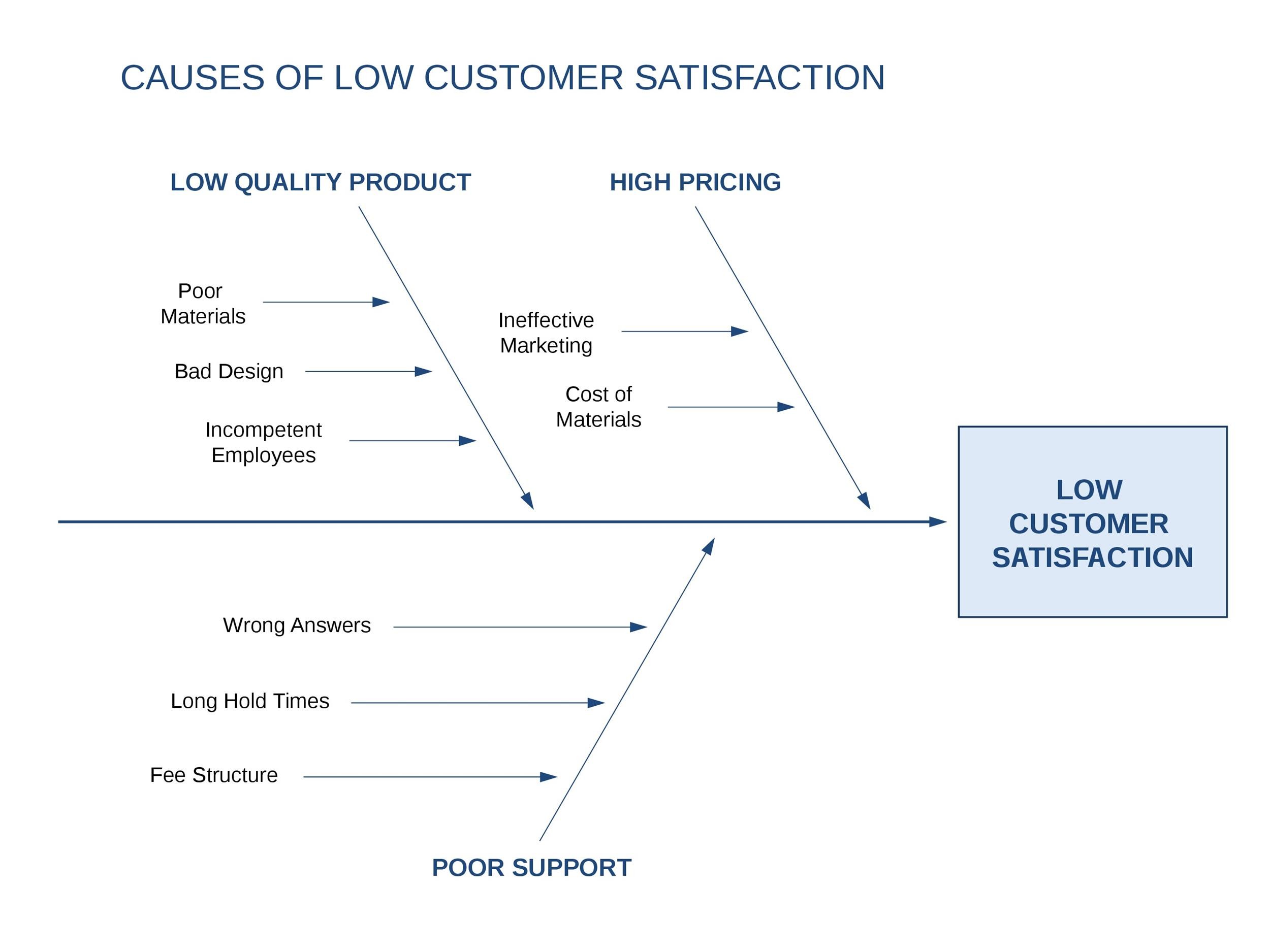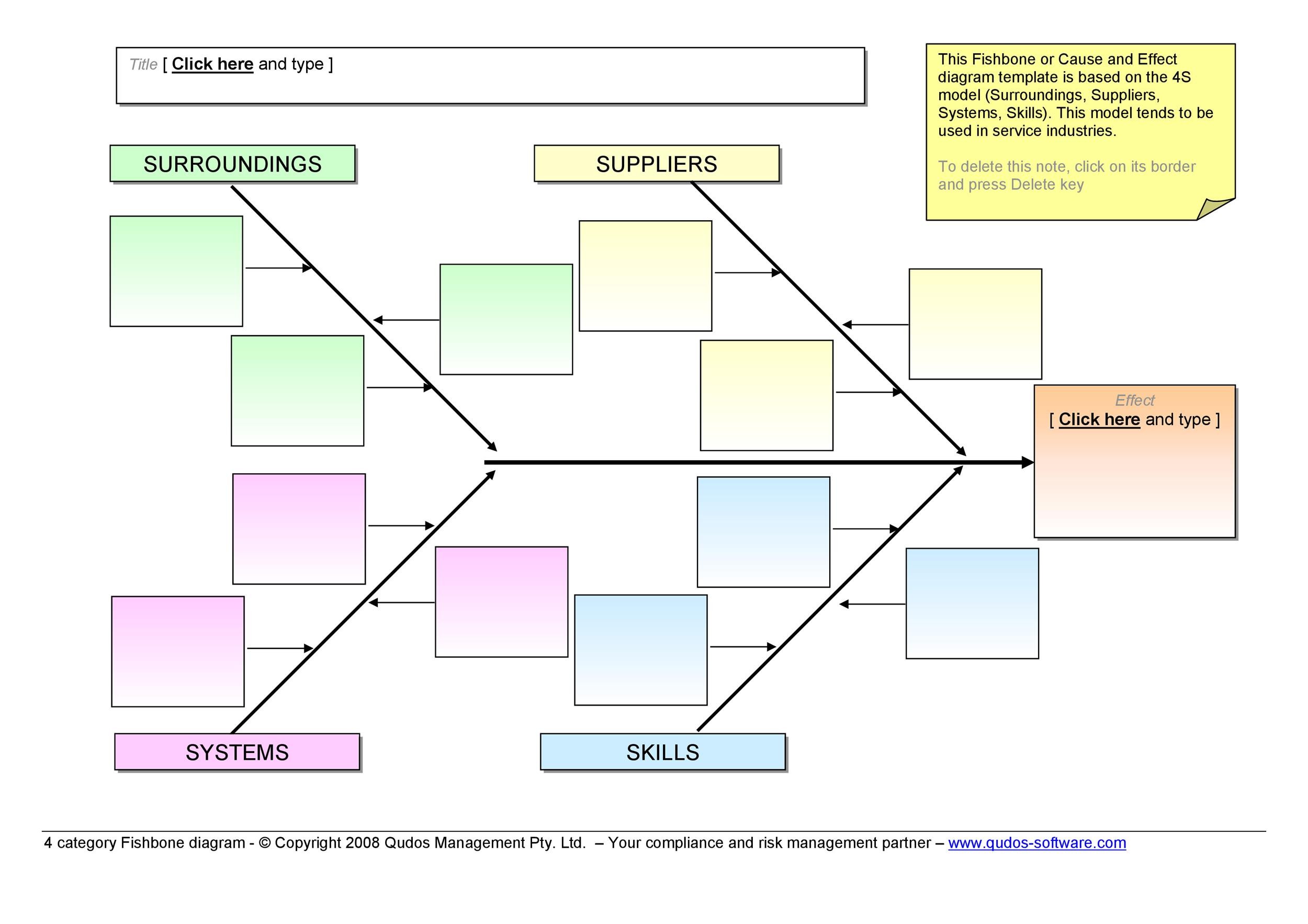
Some generic categories to start with may include methods, skills, equipment, people, materials, environment or measurements. Then at least four overarching "causes" are identified that might contribute to the problem.

A horizontal arrow is then drawn across the page with an arrow pointing to the head. The head of the fish is created by listing the problem in a statement format and drawing a box around it.Once a problem that needs to be studied further is identified, teams can take the following steps to create the diagram:
#Ishikawa diagram examples how to#
How to create a fishbone diagramįishbone diagrams are typically made during a team meeting and drawn on a flipchart or whiteboard. Fishbone diagrams are considered one of seven basic quality tools and are used in the "analyze" phase of Six Sigma's DMAIC (define, measure, analyze, improve, control) approach to problem-solving.įishbone diagrams are also called a cause and effect diagram, or Ishikawa diagram. Kaoru Ishikawa, a Japanese quality control expert, is credited with inventing the fishbone diagram to help employees avoid solutions that merely address the symptoms of a much larger problem. Fishbone diagrams are typically worked right to left, with each large "bone" of the fish branching out to include smaller bones, each containing more detail.ĭr. The name comes from the diagram's design, which looks much like a skeleton of a fish. After the group has brainstormed all the possible causes for a problem, the facilitator helps the group to rate the potential causes according to their level of importance and diagram a hierarchy. It should be efficient as a test case technique to determine cause and effect.Ī fishbone diagram is useful in product development and troubleshooting processes, typically used to focus a conversation around a problem. Typically used for root cause analysis, a fishbone diagram combines the practice of brainstorming with a type of mind map template. This tool is used in order to identify a problem’s root causes.

You can also test to see which of these the main culprit is and help you solve the problem efficiently.A fishbone diagram is a visualization tool for categorizing the potential causes of a problem. You can now investigate the issue further using investigations and surveys. Analyze the diagramīy the final step, you should have a fully fleshed fishbone diagram indicating all the possible causes of the problem statement. You may need to draw smaller sub-branch lines off a cause line if that particular cause is a bit more complex. Draw shorter lines off the bones of the fish diagram to help you visualize these potential causes. Identify the possible causes of the problem that may be behind each factor. Draw a line off the spine of the fish diagram for each cause and label each line at the very top. These could be systems, materials, equipment, people, external forces, people, etc.

Brainstorm the major categories of causesīy brainstorming with your team, decide how to categorize the significant factors causing the problem. The fish's head represents the problem statement, and the horizontal line resembles the fish's spine. Write the problem statement in a box on the right-hand side, and then draw a horizontal line from your problem statement. Figure out what the exact issue is, who's involved and when and where it occurs. The first step of creating an Ishikawa diagram involves identifying, agreeing, and writing down a problem statement. Here is how you can create an Ishikawa fishbone diagram in four easy steps. The ribs represent the causes of an event, and the skeleton's head indicates the outcome. This is because Ishikawa diagrams look like a fish skeleton.

Ishikawa diagrams are sometimes referred to as fishbone diagrams, Fishikawa, herringbone diagrams, or cause and effect diagrams.


 0 kommentar(er)
0 kommentar(er)
